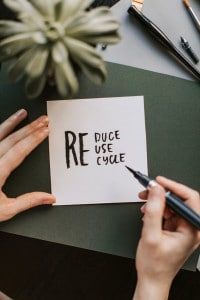Reducing The Eco Ramifications Of Your Advertising Campaign

Being an eco-friendly, sustainable business is something we have to
strive for more and more
in the modern era. Every day that goes by, the working world pumps tons of carbon emissions into the environment, thanks to manufacturing, general office needs, and byproduct waste.
And one of the worst offenders, within your day-to-day company operations, is your advertising department. A lot of waste can come out of this part of your business, and the impact on the environment is far more serious than anyone first thought. Here’s what you need to know:
Understand the Waste You Create
Advertising has a huge waste problem, both offline and online. Most adverts are never seen by the people they’re supposed to sell products to, and that’s a huge problem for your advertising budget. Similarly, while we have a physical carbon footprint, we can also have a ‘digital footprint’ as well – hosting old ads, using large cloud servers, etc., can waste a lot of energy per year.
Being efficient in how you use server space, as well as keeping scalability sustainable, is quite the challenge. It often involves regular code changes, as well as only saving the data that’s truly needed – this cuts back on waste in both consumption and time, which is great for business.
Introduce Sustainability into Your Message
Having a sustainable message is key for both attracting modern consumers and improving your current digital marketing strategy; people want to be sure that the company they’re shopping with has a mind for the world at large, and cares about their impact.
And as that very company, you also need to go the extra mile to minimize your impact, which can be done very effectively via advertising.
And incorporating a sustainable message works both professionally and personally; you can incorporate stories that both you and your employees have experienced into your marketing, to prove you have a green mission at heart. Similarly, you can encourage green efforts in your entire team, to help the snowball keep on growing.
Be Aware of Where You Advertise
Finally, remember that your company does not exist in a vacuum – your advertising is going to have an effect on someone, somewhere, even if that advert does not convert customers. Indeed, the more you advertise, the more waste you’re going to leave behind, especially if you’re advertising in high-traffic areas.
Billboards, for example, are one of the worst offenders of contributing to pollution. With digital billboards coming more and more into use, the electrical consumption of keeping an ad up for even just a week can be astronomical .
The eco ramifications of your advertising department as a whole can be severe. You could be encouraging frivolous spending that ends in more waste than necessary, as well as ramp up your manufacturing efforts to live with the demand. In the end, you’ll have a much larger carbon footprint and a lack of sustainability. But with the above points, you can turn this around.


